|
Sunday:
November 9, 2003 | |
0048 GMT |
 |
Desert could explain why Viking found no life on Mars
A team of scientists from NASA, the Universidad Nacional Autonoma de Mexico, Louisiana State University and several other research organizations has discovered clues from one of Earth's driest deserts about the limits of life on Earth, and why past missions to Mars may have failed to detect life.
 FULL STORY FULL STORY
 |  |

|
 |
Sand ripples taller on Mars
Mars is kind of like Texas: things are just bigger there. In addition to the biggest canyon and biggest volcano in the solar system, Mars has now been found to have sand ripples twice as tall as they would be on Earth.
 FULL STORY FULL STORY
 |  |
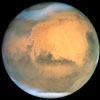
|
 |
IN OTHER NEWS Additional stories making news today
|
 |
Two cosmic explorers named 'Best of What's New' -- Two recently launched NASA missions won "Best of What's New" awards from Popular Science magazine. The two missions, the Space Infrared Telescope Facility (SIRTF) and Galaxy Evolution Explorer (GALEX), which both probe the far reaches of our universe.

KSC engineer receives R&D 100 Award for new insulation technology -- James Fesmire, NASA lead engineer of the Cryogenics Testbed Facility at Kennedy Space Center, received the R&D 100 Award for his work on a new product, "Flexible Aerogel Superinsulation," a composite insulation blanket. R&D named Fesmire an innovator and the product "one of the most technologically significant of the year."

Senate confirms NASA chief financial officer -- President George Bush has appointed Gwendolyn Brown as NASA's new Chief Financial Officer. Brown's nomination was confirmed by the United States Senate. The CFO provides professional leadership for the planning, analysis, justification, control and reporting of all NASA fiscal resources, and for agency strategic management and planning, and performance measurement.
|
 |
|
Saturday:
November 8, 2003 | |
0420 GMT |
 |
NASA increases return-to-flight shuttle crew to seven
Two space veterans and a rookie have joined four other astronauts already training as the crew for NASA's first post-Columbia space shuttle mission, now targeted for launch next September.
 FULL STORY FULL STORY
 |  |

|
 |

Video coverage for subscribers only:
 VIDEO: 12-MINUTE OVERVIEW OF STS-114 SHUTTLE MISSION QT VIDEO: 12-MINUTE OVERVIEW OF STS-114 SHUTTLE MISSION QT
 VIDEO: ANIMATION OF CARGO MODULE INSTALLATION QT VIDEO: ANIMATION OF CARGO MODULE INSTALLATION QT
 VIDEO: INFORMATION ON SPACE STATION'S GYROSCOPES QT VIDEO: INFORMATION ON SPACE STATION'S GYROSCOPES QT
 VIDEO: SPACEWALK ANIMATION OF GYROSCOPE REPLACEMENT QT VIDEO: SPACEWALK ANIMATION OF GYROSCOPE REPLACEMENT QT
 VIDEO: INSTALLATION OF EXTERNAL STATION STOWAGE PLATFORM QT VIDEO: INSTALLATION OF EXTERNAL STATION STOWAGE PLATFORM QT
 SUBSCRIBE NOW SUBSCRIBE NOW

|
Budget ax falls on planet finder, Mercury lander
Budget pressures have forced the European Space Agency to kill the Eddington mission to discover Earth-like planets and a planned robotic lander to explore the surface of Mercury.
 FULL STORY FULL STORY
 |  |

|
 |
Biggest solar X-ray flare ever classified as X28
It has been announced that the massive solar X-ray flare which occurred earlier this week was, at best estimate, an X28. There is still a small chance this will be revised by a small amount, but it is now official: We have a new number 1 X-ray flare for the record books, the most powerful in recorded observational history.
 FULL STORY FULL STORY
 |  |

|
 |
|
Friday:
November 7, 2003 | |
0118 GMT |
 |
Dark matter forms a ghost universe, new theory shows
The "dark matter" that comprises a still-undetected one-quarter of the universe is not a uniform cosmic fog, says a University of California, Berkeley, astrophysicist, but instead forms dense clumps that move about like dust motes dancing in a shaft of light.
 FULL STORY FULL STORY
 |  |

|
 |
Turbulent neighborhood seen near eruptive star
A small portion of the rough-and-tumble neighborhood of swirling dust and gas near one of the most massive and eruptive stars in our galaxy is seen in this Hubble Space Telescope image. This close-up view shows only a three light-year-wide portion of the entire Carina Nebula, which has a diameter of over 200 light-years. Located 8,000 light-years from Earth, the nebula can be seen in the southern sky with the naked eye.
 FULL STORY FULL STORY
 |  |
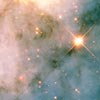
|
 |
IN OTHER NEWS Additional stories making news today
|
 |
NASA awards space station mission integration contract -- NASA has awarded a contract with a potential value of $145.1 million for support of International Space Station mission integration services to Barrios Technology, Inc. of Houston.
|
 |
|
Thursday:
November 6, 2003 | |
0210 GMT |
 |
Voyager approaching solar system's outer limits
NASA's Voyager 1 spacecraft is about to make history again. It is the first spacecraft to enter the solar system's final frontier, a vast expanse where wind from the sun blows hot against thin gas between the stars: interstellar space.
 FULL STORY FULL STORY
 |  |

|
 |

Video coverage for subscribers only:
 VIDEO: WATCH WEDNESDAY'S VOYAGER NEWS CONFERENCE QT VIDEO: WATCH WEDNESDAY'S VOYAGER NEWS CONFERENCE QT
 SUBSCRIBE NOW SUBSCRIBE NOW

|
Roses in the southern sky
The two best known satellite galaxies of the Milky Way, the Magellanic Clouds, are located in the southern sky at a distance of about 170,000 light-years. They host many giant nebular complexes with very hot and luminous stars whose intense ultraviolet radiation causes the surrounding interstellar gas to glow.
 FULL STORY FULL STORY
 |  |

|
 |
IN OTHER NEWS Additional stories making news today
|
 |
Proposed NASA Explorer missions selected for study -- NASA recently selected candidate mission proposals that would study the universe, from Jupiter and the sun to black holes and dark matter. The proposals are candidates for missions in NASA's Explorer Program of lower cost, highly focused, rapid-development scientific spacecraft.

NASA awards space station cargo mission contract -- NASA has awarded a contract with a potential value of $165.8 million for support of International Space Station Cargo Mission services to Lockheed Martin Space Operations of Houston.
|
 |
|
Wednesday:
November 5, 2003 | |
0054 GMT |
 |
Sun spews spectacular solar storm
The NOAA Space Environment Center reports that an intense explosion occurred on the sun Tuesday afternoon. The violent eruption saturated X-ray detectors on NOAA's GOES satellite, which monitors the sun and produces a new image every minute.
 FULL STORY FULL STORY
 |  |
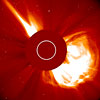
|
 |
Astronomers find nearest galaxy to the Milky Way
An international team of astronomers from France, Italy, the UK and Australia has found a previously unknown galaxy colliding with our own Milky Way. This newly-discovered galaxy takes the record for the nearest galaxy to the centre of the Milky Way.
 FULL STORY FULL STORY
 |  |

|
 |
NASA: Full use expected from Mars rover tool
A series of tests of one of the science instruments on NASA's Mars Exploration Rover Spirit has enabled engineers and scientists to identify how to work around an apparent problem detected in August.
 FULL STORY FULL STORY
 |  |
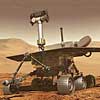
|
 |
|
Tuesday:
November 4, 2003 | |
0109 GMT |
 |
Solar storms continue to pummel Earth
The series of solar storms that have pummeled Earth continues as forecasters at the NOAA Space Environment Center in Boulder, Colo., observed three more explosions on the sun during the past 24 hours.
 FULL STORY FULL STORY
 |  |

|
 |
Key milestone achieved in crew escape demonstration
In wind tunnel tests during September and October, the Lockheed Martin-designed Pad Abort Demonstration vehicle proved that it is stable under the maneuvering required to escape from a catastrophic launch vehicle event. The tests were conducted at Lockheed Martin's High Speed Wind Tunnel in Texas.
 FULL STORY FULL STORY
 |  |

|
 |
Station video coverage
Hours of video covering the recent changing of the guard aboard the International Space Station is available to our Spaceflight Now Plus subscribers. The movies follow the launch of Expedition 8 and the landing of Expedition 7 aboard Russian Soyuz spacecraft.
 FULL COVERAGE FULL COVERAGE
 |  |
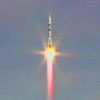
|
 |
Boeing establishes Orbital Space Program office
Boeing established an integrated Orbital Space Program office Monday, headquartered in Huntsville, that will provide innovative solutions for NASA and support a robust future for human space flight. The office includes the Orbital Space Plane and Alternate Access to Station programs.
 FULL STORY FULL STORY
 |  |
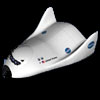
|
 |
Atlas 5 gets go-ahead for second Air Force mission
The U.S. Air Force has authorized International Launch Services to begin integrating the Wideband Gapfiller Satellite No. 3 with the Atlas 5 rocket, as the second mission ordered from the company under the government's Evolved Expendable Launch Vehicle program. WGS-3 is planned for launch in early 2006.
 FULL STORY FULL STORY
 |  |

|
 |
|
Monday:
November 3, 2003 | |
0202 GMT |
 |
NASA probe captures 'sound' of solar storm
Although no major electrical problems have yet resulted from the current series of solar flares bombarding the Earth, NASA's Cassini spacecraft was recently used to record the sound of one of the largest solar flares seen in decades as it moved outward from the Sun.
 FULL STORY FULL STORY
 |  |

|
 |
Recent warming of Arctic may affect world climate
Recently observed change in Arctic temperatures and sea ice cover may be a harbinger of global climate changes to come, according to a recent NASA study. Satellite data -- the unique view from space -- are allowing researchers to more clearly see Arctic changes and develop an improved understanding of the possible effect on climate worldwide.
 FULL STORY FULL STORY
 |  |

|
 |
IN OTHER NEWS Additional stories making news today
|
 |
NASA exploring potential of small UAVs for Earth studies -- NASA is exploring the potential use of uninhabited aerial vehicles (UAV) that look like large radio controlled airplanes to conduct scientific studies of the Earth. Long endurance UAVs have the potential to fill the gap between satellites and surface networks in the integrated global observing system.
|
 |

